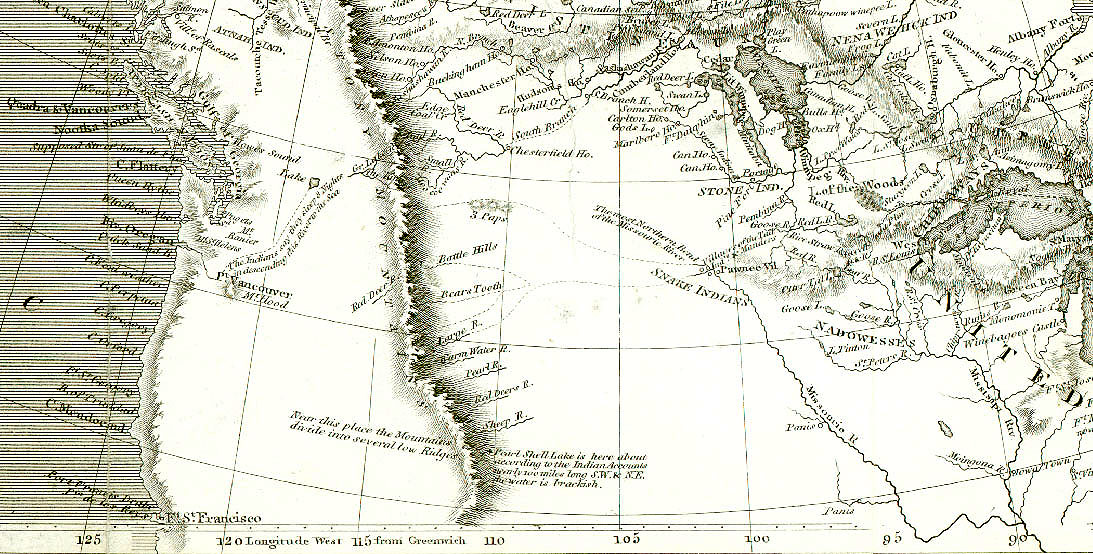Tribal Research
Geography
Longitude, latitude, altitude (elevation)
Water
Landscape
Climate
Weather
Water
Shelter
Natural resources
Fauna (animals)
Flora (plants)
Food
Medicine
Clothing and Body Adornment
Culture
Religion
Arts and Crafts
Stories (origins, folktales, legends, myths)
Superstitions and Beliefs
Trade and Commerce
Currency (money)
Population
Government
Education
Social System
Ceremonies, Traditions, Celebrations
Use your research notes to prepare for our great council meeting of all tribes. At this meeting, you will share your tribal perspective on the Great White Chief’s Expansion West into your territory. You will also prepare at least two of the following tribal traditions to bring to council so that all council members can learn from the perspective and experiences of your tribe:
Food & Medicine
Art & Craft
Music & Dance
Origin Stories
Sacred Place
Flora & Fauna
Map of the territory
Model of the shelter
System of Government
Belief System
Clothing
The Blackfeet Nation
Explore the history and current affairs of the Blackfeet Tribe.
Explore the history and current affairs of the Blackfeet Tribe.
Discover Cathlapotle
Explore the cultural and natural history of the Chinook people and discover how their heritage survives.
Explore the cultural and natural history of the Chinook people and discover how their heritage survives.
Chinook Indians
Learn more about the Chinook Indians of the Northwest.
Learn more about the Chinook Indians of the Northwest.
Nez Perce/Nee-me-poo Home Page
Investigate the culture and history of the Nez Perce Indians. Explore important landmarks to their people and learn about the lives of present day Nez Perce.
Investigate the culture and history of the Nez Perce Indians. Explore important landmarks to their people and learn about the lives of present day Nez Perce.
The Kanza Indians
Learn about the history and culture of the Kanza Indians from Kansas
Learn about the history and culture of the Kanza Indians from Kansas
The Three Affiliated Tribes
Explore the history and culture of the Mandan, Hidatsa, and Sahnish (Arikara) people.
Explore the history and culture of the Mandan, Hidatsa, and Sahnish (Arikara) people.
The Lemhi-Shoshone, Sacajawea's People
Learn about the past, present, and future of the Lemhi Shoshone people.
Learn about the past, present, and future of the Lemhi Shoshone people.
The National Park Service: Knife River Indian Villages National Historic Site
Study an array of Plains Indian artifacts at this historic site in North Dakota.
Study an array of Plains Indian artifacts at this historic site in North Dakota.
The Sioux Nation
Learn more about the Lakota, Dakota, and Yankton Sioux.
Origin Stories
http://www.indians.org/welker/legend.htm
http://www.firstpeople.us/FP-Html-Legends/Legends-AB.html
http://www.ewebtribe.com/NACulture/stories.htm
http://public.wsu.edu/~delahoyd/creation.myths.html
Language
http://www.native-languages.org/
Centennial Triibal Stories
http://www.lewisandclark.org/LCTHF2/TRIBAL_RELATIONS.html
http://www.lewisandclark.org/LCTHF2/Tribal_Contact_Information.html
Learn more about the Lakota, Dakota, and Yankton Sioux.
Origin Stories
http://www.indians.org/welker/legend.htm
http://www.firstpeople.us/FP-Html-Legends/Legends-AB.html
http://www.ewebtribe.com/NACulture/stories.htm
http://public.wsu.edu/~delahoyd/creation.myths.html
Language
http://www.native-languages.org/
Centennial Triibal Stories
http://www.lewisandclark.org/LCTHF2/TRIBAL_RELATIONS.html
http://www.lewisandclark.org/LCTHF2/Tribal_Contact_Information.html





